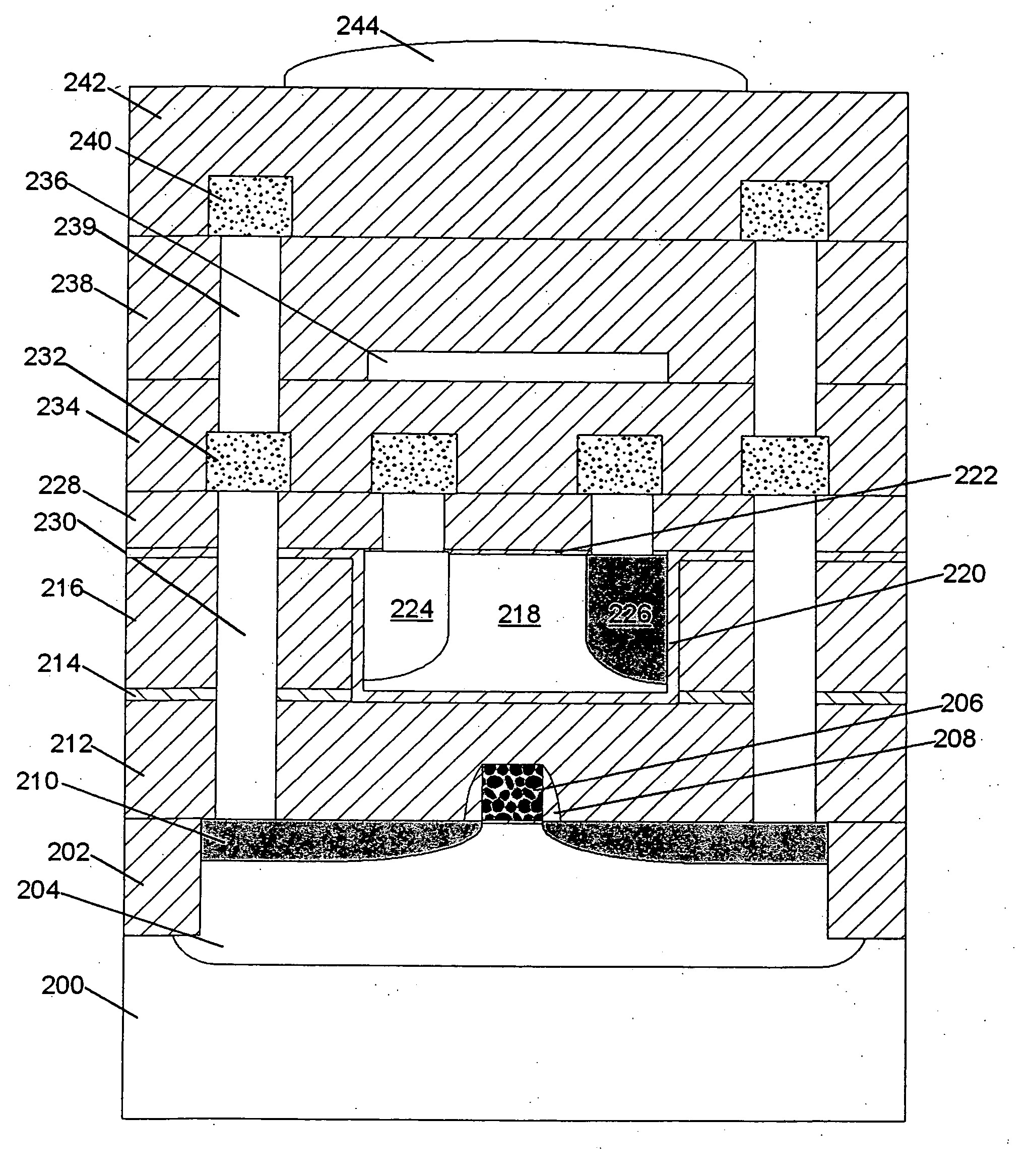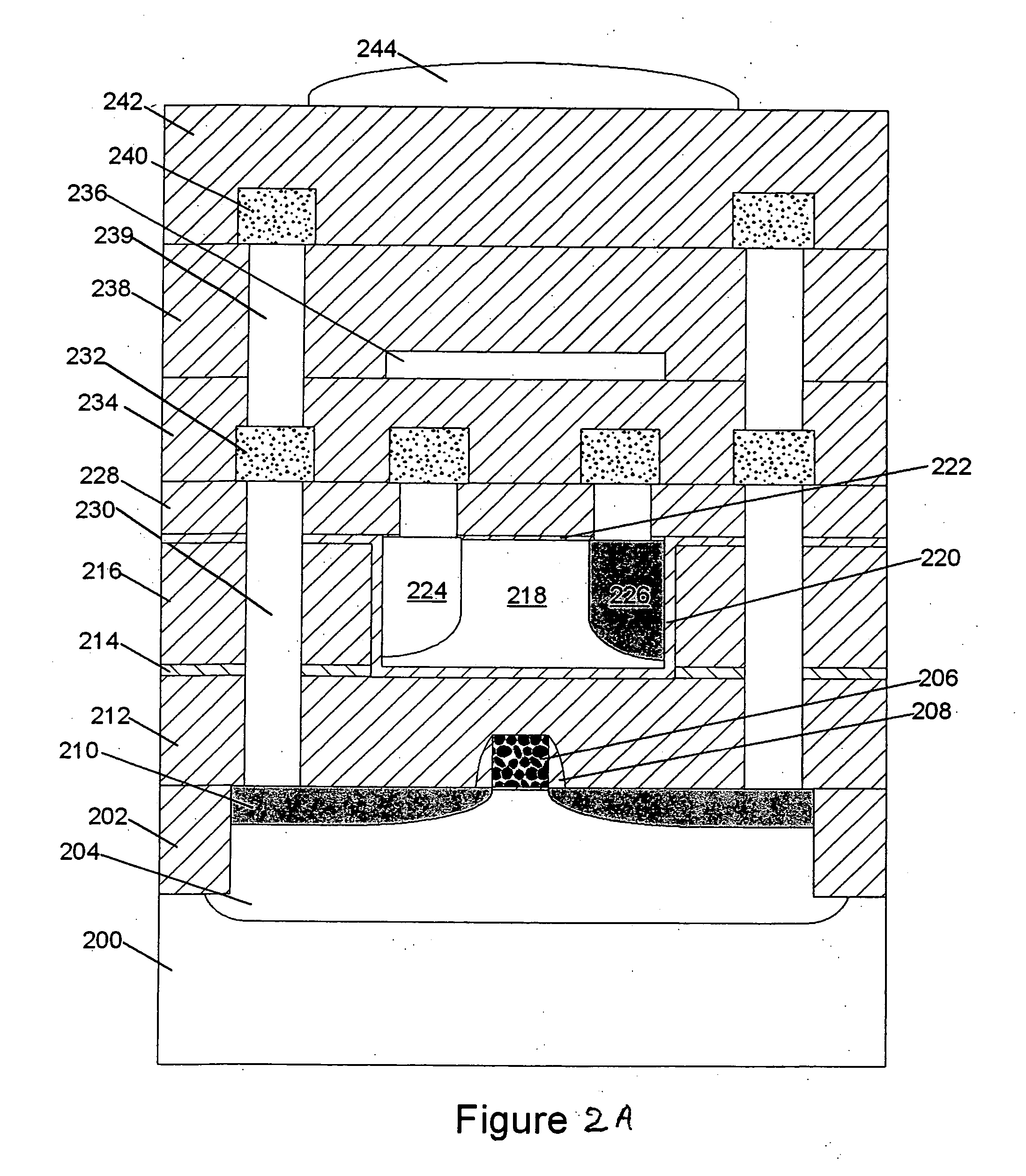Image sensor comprising isolated germanium photodetectors integrated with a silicon substrate and silicon circuitry
a germanium photodetector and image sensor technology, applied in the direction of interferometer, radio frequency control device, instruments, etc., can solve the problems of bonding process reliability, size and speed, bonding failure, etc., and achieve the effect of reducing signal degradation
- Summary
- Abstract
- Description
- Claims
- Application Information
AI Technical Summary
Benefits of technology
Problems solved by technology
Method used
Image
Examples
Embodiment Construction
[0025] Referring to the drawings, FIG. 1 is a schematic flow diagram of a preferred method of fabricating an image sensor. The method will also be described by reference to FIGS. 2A and 2B. FIG. 2A displays the final device structure through metallization and the inclusion of a microlens on each pixel, and FIG. 2B displays the cross section of the device including a Ge seed layer.
[0026] As shown in Block A of FIG. 1, the first step in the fabrication process is to provide a substrate comprising silicon. The silicon is selected or chosen to have the resistivity and crystal orientation appropriate for the chosen silicon device processing technology, usually CMOS or BiCMOS processing.
[0027] The next step (Block B) is to fabricate components of the silicon readout integrated circuitry (ROIC) in the silicon substrate in accordance with the chosen silicon processing technique.
[0028] Referring to FIG. 2A, an exemplary fabrication begins with a silicon substrate 200. A shallow trench iso...
PUM
 Login to View More
Login to View More Abstract
Description
Claims
Application Information
 Login to View More
Login to View More - R&D
- Intellectual Property
- Life Sciences
- Materials
- Tech Scout
- Unparalleled Data Quality
- Higher Quality Content
- 60% Fewer Hallucinations
Browse by: Latest US Patents, China's latest patents, Technical Efficacy Thesaurus, Application Domain, Technology Topic, Popular Technical Reports.
© 2025 PatSnap. All rights reserved.Legal|Privacy policy|Modern Slavery Act Transparency Statement|Sitemap|About US| Contact US: help@patsnap.com



